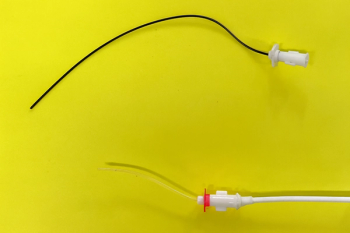
Measuring UPC ratios: In-house dipstick tests versus lab results
A comparison of the results of a new in-house urinary dipstick with those of a veterinary commercial laboratory.
Why they did it
Confirming the presence of glomerular disease requires assessing a urine protein/creatinine ratio (UPC) ratio. Typically, urine is sent to an outside reference laboratory for this evaluation. The study's authors compared the results from a new veterinary in-house urinary dipstick with those obtained by a veterinary commercial laboratory to see if an in-house urinary UPC could be reliably obtained.
What they did
Between August 2010 and June 2011, the authors collected urine from dogs with proteinuria. Dogs with evidence of infection or inflammation in their urinary sediment were excluded from the study. Urine from each dog was divided into two aliquots-one portion was submitted to a veterinary laboratory for analysis and the other was used for dipstick testing. The urine at the reference laboratory was evaluated with an automated chemistry analyzer. Each dipstick was reviewed by two individuals blinded to the other reviewers' interpretation. All UPC ratios from both methods were converted into data groups to facilitate statistical comparison.
What they found
The researchers analyzed urine from 39 dogs, aged 2 to 15 years old, and found poor correlation between dipstick interpretation and chemistry analyzer results. This lack of correlation was independent of the degree of proteinuria. Notably, agreement between the reviewers of each dipstick was substantial in all but three cases.
Take home message
While larger studies will be required to confirm these findings, use of an in-house veterinary urinary dipstick cannot be recommended at this time for measuring UPCs.
Mamone C, Mitchell M, Beaufrere H, et al. Assessment of a urinary dipstick for determination of urine protein/creatinine ratio in canines. J Am Anim Hosp Assoc 2014;50(5):e11-e14.
Link to abstract:
Newsletter
From exam room tips to practice management insights, get trusted veterinary news delivered straight to your inbox—subscribe to dvm360.




